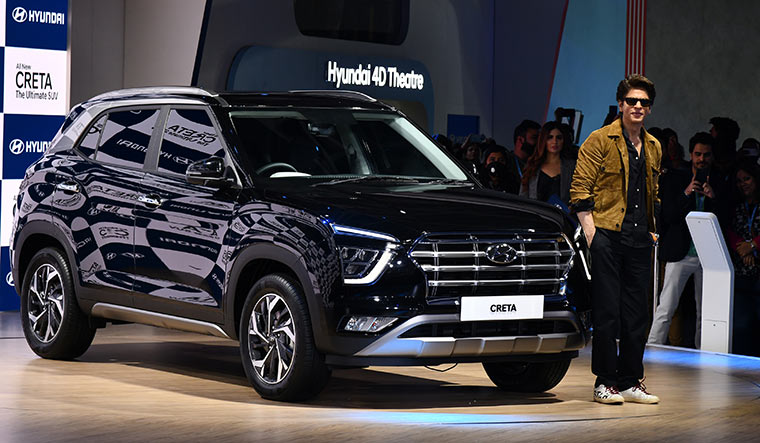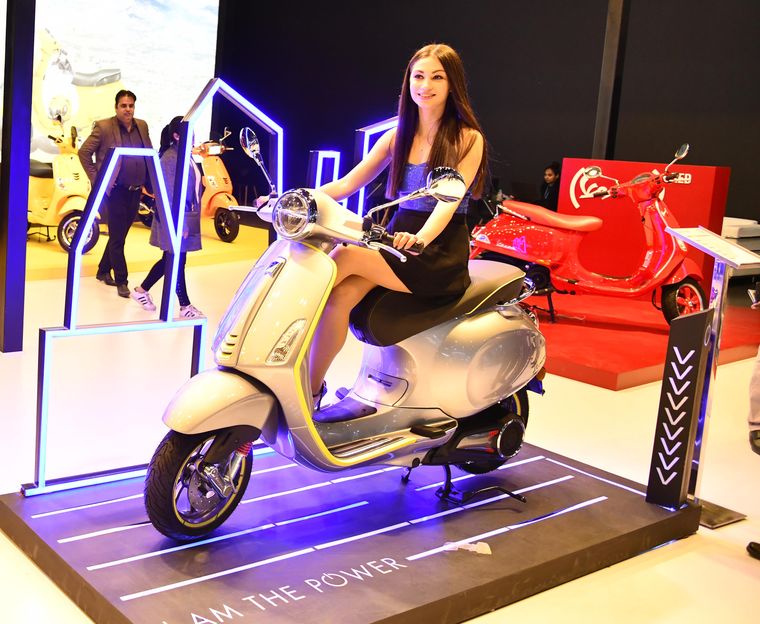Kenichi Ayukawa is still in awe of the diversity of India, his home for the past seven years. And that is exactly why he wanted the local research and development team of the company he runs, India’s largest carmaker Maruti Suzuki, to excel. It was well-placed trust, as the first model Suzuki designed and developed in India, the Vitara Brezza, has been a runaway success.
When Ayukawa took charge of Maruti Suzuki India in 2013, the carmaker was having a bumpy ride in the aftermath of a labour crisis at its Manesar plant and also because of the diminishing demand for petrol vehicles. Its market share had dropped below 40 per cent and it seemed clueless about how to deal with the changing customer preferences. Ayukawa had come with a plan. Under him, Maruti moved from its bread-and-butter small car portfolio to more premium products. When he came up with Nexa, a premium network of dealership for the premium cars in the Maruti stable, many industry experts questioned the rationale behind the move. Nexa, however, turned out to be a masterstroke, as it became the first choice for Maruti customers who wanted to upgrade.
In five years, Maruti regained lost ground, once again crossing 50 per cent market share thanks to the success of models like the Baleno and the Brezza. Bigger cars now contribute more than a quarter of the company’s revenues. And the India unit is the Japanese parent’s biggest contributor to volumes and profit.
Ayukawa, however, now has a new set of challenges before him, and it goes beyond launching new models. As cars are becoming more and more technologically advanced, he has been trying to figure out how to control the cost of bringing in these technologies. “What is crucial is to balance cost and technology,” he said. That is pretty important for Maruti, as pricing remains the single largest factor that gives Maruti cars the edge over the rivals.
Maruti has been investing in hybrid and electric models, but is yet to launch an EV. At the AutoExpo 2020 in Delhi, it unveiled the Futuro-E, an electric SUV concept, which probably would be the base of its electric portfolio in the future. An electric version of its popular Wagon-R hatchback was showcased at the last edition of the AutoExpo, and it is expected to be launched later this year. Ayukawa, however, is not willing to tie up his company’s future entirely with electric cars. “The next million green vehicles will include a range of technologies and powertrains such as CNG, smart hybrids and electric vehicles,” he said.
And, Maruti remains unfazed by a slew of electric vehicles launched by competitors, as it thinks India is not ready for the change. “There are a few constraints to the development of EVs in India,” said Shashank Srivastava, executive director (marketing and sales), Maruti Suzuki India. “In developed countries 85 per cent of cars are parked in the same spot every day. In India, 85 per cent car owners do not know where we will park. We park wherever we find space. Why is parking important for EVs? You need a charger there. Then there is range anxiety. Another factor is that, in India, most of our electricity is made of coal. So, while we may reduce pollution on the roads, there may be more pollution where the electricity is made. Then we have shortage of electricity in many parts of the country.”
Some of Maruti’s competitors, however, have a different perception of the market. Mahindra, for instance, is betting big on electric. It unveiled three electric vehicles at the AutoExpo, including eKUV100 with an attractive price tag of 08.25 lakh. “Our focus will not only be on growing our clean energy business unit through our electric mobility business, but also to provide cleaner engines as we approach the implementation of BSVI norms,” said Pawan Goenka, managing director of Mahindra and Mahindra.
Mahindra also unveiled Funster, an electric convertible concept, and Atom, an electric urban mobility solution. This shift in focus seems well-thought-out, as Mahindra has been facing significant competition in its stronghold—the utility vehicle segment. In the fast growing SUV segment, its ageing models have been struggling to take on the the likes of the Kia Seltos, the Hyundai Venue and the MG Hector. But Mahindra has big plans for the segment as well. Next year it may launch an SUV the size of the Venue and a smaller SUV based on Ford’s B-Segment platform. Mahindra has a joint venture with the American carmaker.
The catch, however, is that, everybody wants a bigger slice of the SUV pie. Kia, for instance, wisely chose the premium utility vehicle segment where the Toyota Innova has had a free run, to launch its next vehicle after the stupendous success of the Seltos. The Carnival offers a truckload of features at a competitive starting price of Rs24.9 lakh. At the AutoExpo, Kia unveiled a concept compact SUV called the Sonet, which shares the platform and engines of the Venue.
With just one product on sale, Kia had become India’s largest mid-size SUV player and the fourth largest vehicle maker in India. The Sonet, which is expected to arrive in the second half of this year, may add significantly to the numbers, considering the pace at which the segment has been growing. Manohar Bhat, head of sales and marketing at Kia Motors India, said the company would increase the production capacity further to meet the demand. Some top trims of the Seltos have a waiting period of three months.
Tata Motors, which made a splash at the AutoExpo with 12 passenger vehicles, seems to have already begun building a strong portfolio of electric vehicles. Natarajan Chandrasekaran, chairman of Tata Group, said the “mega-trend” of shift to EVs would only accelerate in the longer term, and it is even more imperative in India given that it had some of the most polluted cities in the world and because 85 per cent of our oil was imported.
Tata, in fact, is focusing on developing an entire ecosystem for EVs, which will include new products, charging infrastructure, and battery cells and recycling. It forayed into the EV market two years ago with an electric variant of the Tigor compact sedan. Recently it launched the electric variant of its popular Nexon compact SUV and unveiled the hatchback Altroz EV. “Of course, you have the car. But, you need the charging infrastructure, you need battery packs, cells and also you need very good financing options. All of this is critical if this whole shift to electric mobility has to become successful,” said Chandrasekaran.
Tata Group is looking to leverage the strengths of its companies to build end-to-end scale in EVs. “Tata Power will play a very critical role in EV charging facilities,” said Praveen Sinha, CEO and MD of Tata Power. “Already, it has 100 charging stations in eight cities and we propose to make it 300 by end of March, and about 650 in one year.”
While Tata Chemicals is focusing on electric batteries and energy storage solutions, Tata AutoComp is looking at localising the critical components that go into EVs, like motors, inverters and transmission. “Our approach is fully focused on building a circular economy, which starts with battery actives, going on to battery cells and recycling of batteries,” said R. Mukundan, MD and CEO of Tata Chemicals.
Development of local ecosystem is crucial for the growth of EV sales, as it will help build economies of scale and bring costs down, which will help boost consumer demand. “India has much catching up to do in terms of the four drivers of growth globally—battery price, demand incentives, supply push and charging infrastructure,” said Pushan Sharma, associate director at CRISIL Research.
Prices are also a key factor in people shifting to EVs. “Right now oil prices have fallen and are likely to remain stable. That will have a bearing on people’s decision making,” said Gaurav Vangal, country lead for production forecasting at IHS Markit.
Rather than the EV drive, however, the next paradigm shift in the Indian automobile sector could be engineered by the Chinese. All of the top three Chinese carmakers—SAIC Motor Corp, Great Wall Motors and Haima Automobile—had a strong presence at the AutoExpo. SAIC is already present in India through its subsidiary MG Motor India, which launched the successful Hector SUV last year. MG showcased 14 models at the AutoExpo. It may launch four products in the next two years. Rajeev Chaba, managing director of the company, said all those models had the potential to be launched in India. “We are assessing the feedback,” he said.
Another Chinese giant assessing feedback was Great Wall Motors, China’s largest SUV maker. It unveiled the Haval lineup of SUVs at the AutoExpo, and is investing Rs7,000 crore in India. It will acquire General Motors’ plant in Talegaon in Maharashtra and set up a manufacturing unit for lithium-ion batteries and internal combustion engines. Hardeep Singh Brar, director of sales and marketing of Great Wall Motors in India, said India was a natural investment destination for the company. “India’s growing SUV segment makes it a perfect scenario for us to enter this market,” he said.
Haima, the third Chinese player, has partnered with Bird Electric in India, and showcased a five-seater electric hatchback at the AutoExpo. The company said it would cost around Rs10 lakh and go on sale later this year. It might cost much less if the company achieves its target of localising production in 2021.
The grand plans of Chinese carmakers have triggered concerns over them taking over the Indian automobile market, just like the Chinese smartphone makers took over the Indian market at the expense of local companies. But the Tatas and the Mahindras are no pushovers, and they have successfully taken on the might of the likes of GM and Ford. The Chinese may have a long game waiting for them.
WITH KARTHIK RAVINDRANATH




